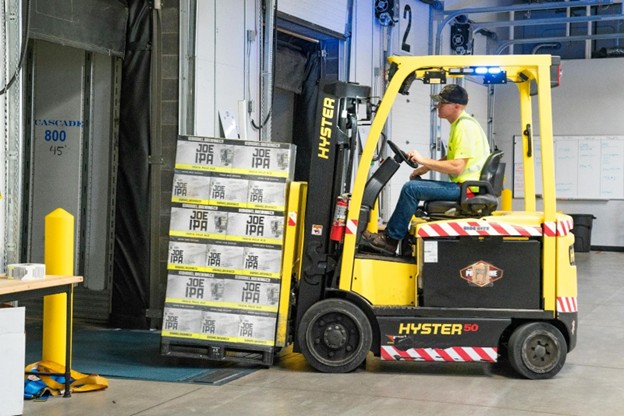Content
As packages get smarter, blockchain is becoming its hidden backbone. From tracing material to initiating payments, smart contracts are rethinking the movement of goods and how trust is authenticated.
The long logistics and material-sciences-driven packaging sector gets reprogrammed in code. Everywhere, makers, movers and merchants are testing blockchain protocols that carry out transactions when certain conditions are met automatically. The same data-oriented thinking that follows SOL to USD exchanges in real time also powers automation in packing workflows.

That evolution unfolds against a backdrop of fluctuating crypto prices and accelerating digital adoption. According to data from Binance, 1 Solana is worth USD $205.13 (at the time of writing), having fallen -7.21% in the last month but gaining +27.73% in the last three months. Those shifts demonstrate the increasing impact of crypto assets on trade and infrastructure. As blockchain’s utility extends beyond finance, it’s becoming central to how products are packaged, shipped and verified; not just how they’re paid for.
Smart Contracts and Their Automating Effect in the Packaging Industry
Classic packaging supply chains rely on manual documentation layers and approvals. Smart contracts (self-executing programs stored on blockchain) eliminate most of that friction. When a supplier uploads documentation of production or delivery, a contract self-remits payment or changes the order status among all parties.
It alters how packing plants behave. Machines can now enter output data directly into blockchain registries so that smart contracts may immediately verify performance or compliance. This is a movement from reactive to autonomous business logic, stripping out intermediaries while retaining accountability very clearly in plain sight.
For packaging companies, this means reduced administrative expenses and shorter fulfillment cycles. For consumers, it means identifiable dependability. Every seal, barcode, or pallet may be coupled with a digital credential that certifies where, when and how it was produced.
When Prices of Cryptocurrency Fluctuate
Intelligently responsive packaging systems are increasingly integrated into larger blockchain economies. When cryptocurrency prices vary, transaction values contained in smart contracts can affect cost structures in subtle but significant ways.
When digital currencies spike, on-chain fees can spike, affecting how frequently companies automate payments. When prices fall, companies may lower contract execution thresholds to maintain reserves. Such micro-moves transmit throughout packaging networks, having supplier lead times and shipping scheduling.
As per Binance Research, "The total crypto market cap lost more than US300B this week, falling to US$3.7T towards the end of the week. Riskier assets like altcoins fell the most, with Ethereum falling over 13% and Solana by 20%. BNB fell only by ~3% while BTC slipped ~6%."
Such market fluctuations illuminate why supply systems based on blockchain need to stay flexible. Automation ensures that when volatility arrives, data-driven rules maintain consistency in operations. Intelligent packaging could someday feature dynamic contracts that account for prices fluctuating before they settle.
Designing With Transparency In Mind
People are increasingly insisting on knowing something about the origin of the product, not only the price. Blockchain now makes packaging a storytelling device. QR codes or embedded chips can connect directly to distributed ledgers, which disclose the origin of the raw material, the conditions of manufacture and the carbon footprint.
Data-first makes the packaging's role reverse. Rather than a passive guard, it becomes a dynamic verification of authenticity. Every step in the blockchain, farm to factory to shelf, establishes credibility in a manner that static labels never could.
For global enterprises, transparency has become a competitive advantage. For companies in the food, pharmaceutical and luxe markets, blockchain tracking prevents forgery and verification. With the addition of IoT sensors that note temperature or moisture, intelligent packaging can attest that shipments stayed safe in transit, no human touch required.
The Volatility Variable
Cryptocurrency volatility isn’t just a financial concern. It’s a design parameter for developers building blockchain logistics. When token prices fluctuate quickly, so do transaction priorities and gas costs. These additional costs may impact how fast smart contracts run.
For packaging businesses employing crypto-associated protocols to process payments or product verification, flexibility matters. Others are innovating variable-rate protocols that vary fees in relation to market forces. Others adopt the use of stablecoins or hybrid schemes to cushion volatility while not relinquishing decentralization.
It’s an adaptive strategy that enables shrewd packaging systems to remain consistent despite the sudden movements of crypto markets. It doesn’t rely on immaculate stability, but on enduring design.
From volatility in cryptocurrencies to product carbon labeling, the future of packaging is being informed by blockchain thinking. Friction gets eliminated by smart contracts, trust gets regained by transparency and automation brings each stage of the journey. In a world where 1 Solana costs $205.13, numbers go up and numbers come down, but the design fundamentals of blockchain remain constant: accuracy, transparency and elasticity. For an industry built on containment, the irony is fitting; the most powerful innovation in packaging today is the one that exists entirely without walls.
